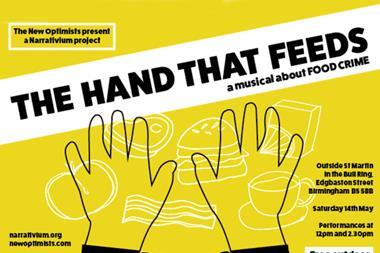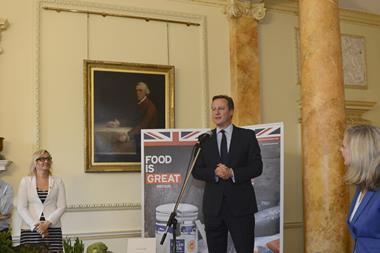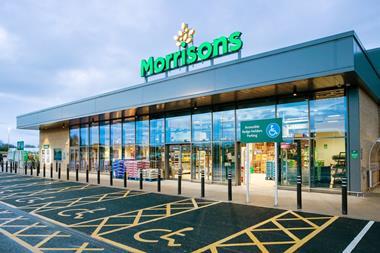
HMV has overtaken Tesco to become the UK’s second-largest vendor of entertainment (behind Amazon) once more. So what does this tell us about the state of the entertainment market and physical versus digital media in 2016? While the positive news for the high street veteran is rather couched in the phrase “best performance since it collapsed into administration”, the sterling performance is almost entirely underpinned by music and video games, both of which are still digitally under-exploited. That’s why, rather than a renaissance for physical media (and high street media sales), I believe these positive results will turn out to be a blip as opposed to a longer-term trend.
I’m a voracious consumer of entertainment products, with a not-at-all-childish addiction to video games and a fully developed sense of musical snobbery. The video game market, currently, makes 77% of its sales on the high street, according to Kantar Worldpanel, while one in four people still only consume music via CDs.
Why such low take-up of digital options? The problem in the video games market is one of capacity and infrastructure. Consoles like the current generation Xbox One and PlayStation 4 still run largely on disc-based media, carefully controlled by their creators to avoid the problems of piracy.
By contrast, the PC video games market is utterly dominated by Steam, a digital-only platform that downloads games directly onto a user’s machine. Steam’s pricing and its notorious seasonal sales are so dominant in this area that three out of every four PC games are sold from this one online portal, which is said to be more profitable per employee than Apple.
Microsoft and Sony, creators of the Xbox One and PlayStation 4 respectively, have online stores, but are plagued by hugely uncompetitive pricing and the problems of console hard drive capacity. Console hard drives tend to be considerably smaller than PC hard drives to keep the price point low, and haven’t really kept up with game sizes, which are now measured in the tens of gigabytes.
Thus, the first reason the high street’s physical media boom is built on sand is that the problems stopping a collapse in console physical media analogous to the collapse in PC physical media are very close to being overcome. Microsoft and Sony, slow-moving behemoths both, are finally showing signs of life in the digital sphere, and console storage capacities are increasing as the tech gets cheaper. While consoles are behind the curve, they’re not far behind, and the end for video game discs is fast approaching.
As for music and CDs, there’s no doubt HMV has improved its price offering, and that there’s a generation out there – unlike with video games, which tends to remain a youthful market – who are still buying CDs and playing them in CD players.
Again, though, the future for CDs looks painful. Fiona Keenan of Kantar says: “Some 14% of the population now has a music subscription service and paid-for Spotify subscriptions are growing at 25%. Yet the CD is still the most popular way to consume music content.”
Note the use of “still”. So why has Spotify (and Apple Music, Tidal, etc) failed to kill off the CD? First, there’s the problem of transience and unreliability. Back catalogues on Spotify are taken down all the time without warning, and the argument rumbles on between artist and content provider about vanishingly small revenues for musicians. There’s also the unreliability of outside-the-home internet – for all the advances made in mobile phones, the data connection in a majority of areas still isn’t good enough to reliably stream an album. That’s without even taking into consideration miserly data caps, which would soon be eaten up by several streams of whatever it is the kids are listening to nowadays.
The spottiness of back catalogues supports the sale of big-ticket CDs from mega-famous artists, and so supports the high street’s CD sales. Adele, for instance, can make far more money from her music (and a lot of money for HMV and Tesco) by simply denying the streaming services, forcing everyone to buy a copy. Similarly, Beyoncé and Taylor Swift have kept their latest albums off Spotify, instead using them to promote Tidal, a streaming service that charges more and pays vastly increased revenues to musicians.
Therein lies the rub. As soon as the ‘artists getting paid’ conundrum is over, the major remaining market for CD sales (huge million-selling albums you can’t get online) will go the way of non-event CD sales – online, into streaming services. The industry should be very worried that only 14% of consumers have a streaming subscription; especially if the palpitations that Netflix, whose catalogue is equally spotty, gives regular TV services are anything to go by.
There will still be a place for physical media, of course. Vinyl’s much-trumpeted comeback is still rolling on, and the console developers are stuck with discs for now. It’s not consumer nervousness or apprehensiveness that’s keeping back the digital tide, though, it’s problems with the technology itself, and that could change far more quickly than the high street is giving it credit for. It would be wise for the industry to take a longer-term view of the positive numbers coming from bricks and mortar stores invested in physical media.



















No comments yet